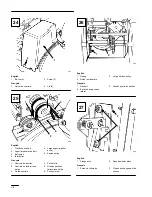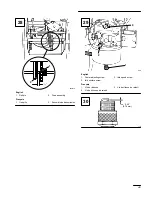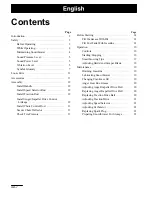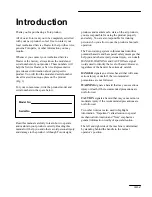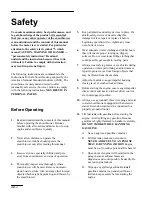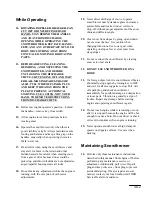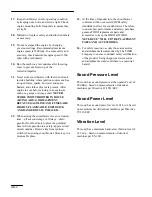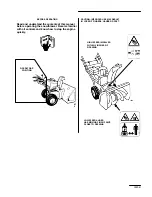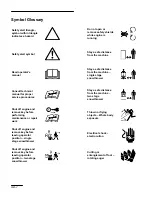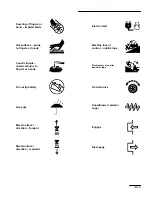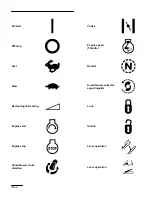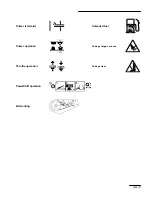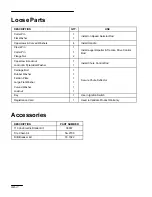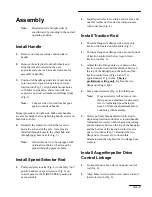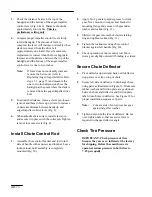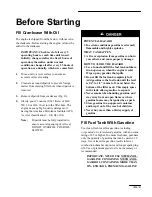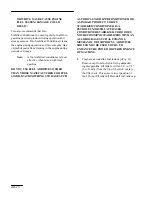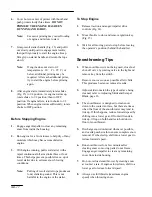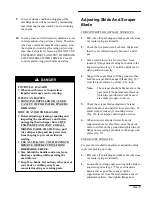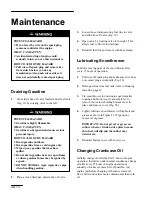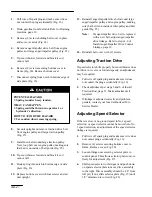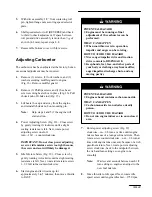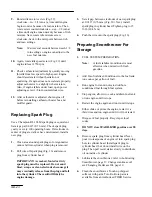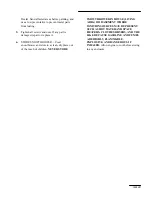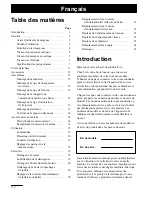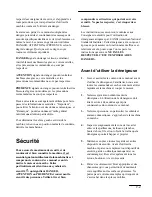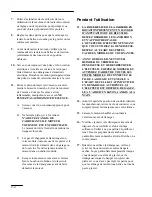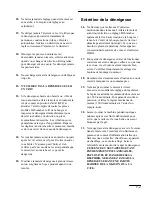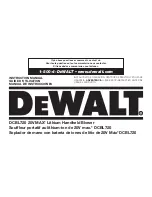
GB–13
3.
Check the distance between the top of the
handgrip and the bottom of the auger/impeller
control lever (Fig. 6 & 9). Distance should be
approximately four inches. This is a
preliminary setting only.
4.
Compress auger/impeller control lever slowly
toward handgrip. The amount of force to
compress the lever will increase noticeably when
slack is removed from the drive belt
(approximately one–half of lever movement).
Adjustment is correct when the force begins to
increase and the distance between the top of the
handgrip and the bottom of the auger/impeller
control lever is one to two inches.
Note:
If force does not noticeably increase,
remove the belt cover (refer to
Replacing Auger/ Impeller Drive Belt,
steps 1–2, page 15) and measure the
one to two inch dimension above the
handgrip at the point where the slack is
removed from the auger/impeller drive
belt.
5.
To adjust the distance, remove clevis pin, loosen
jam nut and thread clevis up or down to increase
or decrease distance between handgrip and
auger/impeller control lever (Fig. 8).
6.
When adjustment is correct, install clevis pin
and secure it in place with the cotter pin. Tighten
jam nut to secure clevis (Fig. 8).
Install Chute Control Rod
1.
Assemble chute control bracket and rod to left
side of handle with capscrew and locknut. Leave
locknut loose until assembly is completely
mounted (Fig. 10).
2.
Apply No. 2 general purpose grease to worm
gear. Next, mount worm gear and bracket to
mounting flange and secure with pyramidal
washer and locknut (Fig. 11).
3.
Slide worm gear into teeth of chute retaining
ring and tighten locknut (Fig. 11).
4.
Tighten the locknut securing chute control
bracket against left handle (Fig. 10).
5.
Check operation of chute control rod. Move
worm gear slightly outward if binding is evident.
Secure Chute Deflector
1.
Pivot deflector upward and back until deflector
stop passes over lip on top of chute.
2.
Secure left side of deflector to discharge chute
using parts as illustrated in Figure 12. Make sure
rubber washer and friction plate are positioned
between chute and deflector and friction plate
tabs fit into holes in deflector. See Figure 12 for
proper installation sequence of parts.
Note:
Concave side of curved washer goes
against large flat washer.
3.
Tighten nuts on both sides of deflector. Do not
over–tighten nuts so that excessive force is
required to change deflector angle.
Check Tire Pressure
IMPORTANT: Check pressure of tires
because they are over–inflated at the factory
for shipping. Before the snowthrower is
operated, reduce pressure in both tires to
7–15 psi equally.

